Flavor description of Kaddura Red Honey Coffee in Tobosi, Costa Rica
For professional baristas, please follow the coffee workshop (Wechat official account cafe_style)
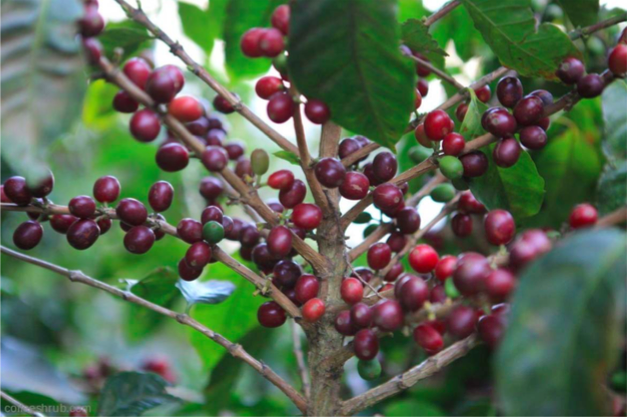
■ yellow honey treatment:
After removing the pericarp, the peel was placed on the African scaffolding in the early morning and turned immediately.
■ red honey treatment:
After the peel was removed, the peel was placed on the African scaffolding in the early morning and exposed to the sun until after noon.
■ black honey treatment:
After removing the peel, the peel was placed on the African scaffolding in the early morning and exposed to the sun until after the afternoon.
■ yellow diamond
After removing the pericarp, open the raw beans with pulp and place them on the muddy land for exposure, and cover with black plastic cloth for shade and rest.
As for the rule of sun treatment, many more meticulous flavor expressions are processed by the way of shading with plastic cloth.
■ Black Pearl:
The harvested red coffee fruit is placed on the African scaffolding in the early morning and regularly turned and exposed to 11.5% moisture content. The whole process takes about two weeks.
■ Black Soul:
The harvested red coffee fruits are placed on the African scaffolding in the early morning, and the whole process takes about three weeks to turn and expose regularly for one day and rest with plastic cloth until the moisture content is 11.5%.
At the same time, in the manor fertilization materials, the manor owner strictly requires that all processes should be planted and fertilized in accordance with organic standards, and the whole manor uses organic self-made compost. At the same time, the organic standard is extended to include soil quality, shade trees and washing plant procedures. After years of efforts, Ras Lajas Manor has passed the Japanese JAS, American USDA and NOP organic certification.
Factory name: coffee factory address: No. 10 Baoqian Street, Guangzhou manufacturer contact information: 38364473 ingredients table: self-baking shelf life: 90 net content: 227g packaging: raw and ripe coffee beans in bulk: whether coffee beans contain sugar: sugar-free origin: Costa Rica roasting degree: moderate roasting
Country: Costa Rica
Grade: SHB
Producing area: Tarazhu Tarrzu
Baking degree: medium baking
Treatment: red honey
Varieties: Kaddura, Kaduai species
Processing plant: Tobosi/ Towbush Manor
Flavor: Brown sugar, almonds, black tea
Costa Rica is the country where coffee was first introduced into Central America and has a long history. The coffee organization has a complete system from production to marketing. Because it is located in the Central American Gorge, there are many volcanoes, it has the natural advantages of sunshine and land, and the climate is reconciled by Pacific and Atlantic currents and sea breezes at the same time, the coffee produced has the characteristics of local micro-climate and soil conditions, in terms of quality and quantity, Costa Rican coffee has always been recognized by the world, and has been rated as one of the world-class high-quality coffee.
Costa Rican volcanic terrain with fertile volcanic ash, mild and suitable temperature, and stable and abundant rainfall is one of the reasons why coffee has become one of the main agricultural products in Costa Rica. The seven major producing areas are: Tarrzu, Tres Rios, Orosi, Central Valley, West Valley, Turrialba and Brunca.
Costa Rica Tobosi was born in 2010, mainly to provide high-quality boutique coffee, with the goal of becoming a leader in supplying boutique coffee. Strive to produce products in an open and transparent system and have a complete track record to ensure that customers can get the best products. All the quality services and manufacturing processes provided are in line with the protection of the environment. In order to achieve this goal, Tobosi planned two estates, Tobosi and Copey,Tobosi, which were originally used to plant ornamental plants and Copey as a secondary forest, but according to the height difference and soil analysis, Tobosi selected the area with the best characteristics of coffee to grow. The manor is managed based on the cultural practices of environmental protection, and each area has environmental tests and soil analysis, which has determined that coffee beans have ideal development and adequate nutrition. For full manual harvest, we can have a more complete understanding of the maturity and tracking management of coffee cherries, while customers can further understand the quality, harvest time, and all related processes.
Villalobos, derived from San Ramon of Typica mutant, is a tree species with relatively small plant, drought tolerance and strong wind resistance. It can be planted in areas with higher altitude and less rainfall, such as mountain edges and windward.
For professional baristas, please follow the coffee workshop (Wechat official account cafe_style)
A variety evolved from the Arabica species
[Caturra] Katura
Red Bourbon, a single gene natural mutation dwarf and green-top variety, planted 5000 Meltel plants per hectare without shade, small and medium-sized beans, and higher yield than Bourbon. It was first discovered in Brazil in 1937 and started commercial cultivation in Minas Gerais, Brazil in 1937. In Central America, Colombia, Costa Rica and Nicaragua are the best. 1500-1700 meters above sea level can produce the best quality and quantity.
Katura is characterized by bright acidity and low to medium consistency. It has less clarity and sweetness than its parent bourbon, with lemon or citrus acidity on the palate, and less sweetness than Typica and Bourbon in sweetness, because the sweetness of Caturra depends on the number and dose of fertilizer applied by the grower, and it has high production capacity, but continuous fertilization and pruning are necessary to maintain production capacity, so the tree is short and multi-branched and compact. The micro-jagged green leaves are relatively wide, and although the production capacity is increased, the yield is still limited because the harvest period takes 2 years and the care cost is high, and it is extremely vulnerable to leaf rust, berry disease and nematodes.
Caturra
Citric acid and mild sweetness
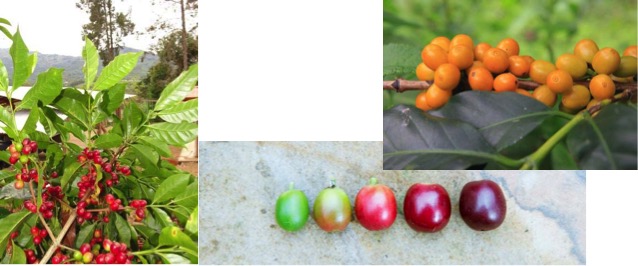
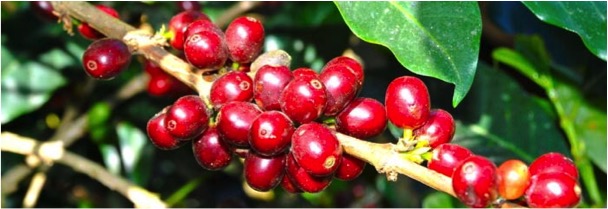
A variety of Casiopea derived from the cross of Caturra Catura.
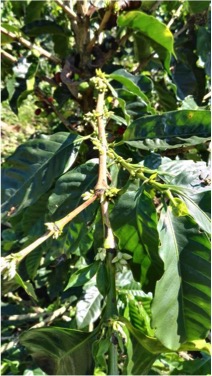
A hybrid of Caturra and Ethiopian wild species ET41, short, green-topped, medium-sized beans, excellent cups, producing the best quality and quantity at 1200 meters above sea level.
High yield but susceptible to leaf rust and pulp
Fruit disease and nematode infection, nutrient requirement
The demand is high.
A variety of interspecific hybrids H3 derived from Caturra Katura.

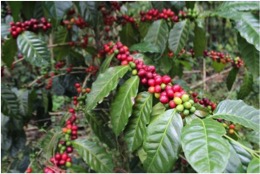
The hybrid between Caturra and Ethiopian wild variety E531 is dwarf, green-topped, large-sized, medium-sized and suitable for planting above 1200 meters above sea level.
High yield but susceptible to leaf rust,
Infection and culture of berry disease and nematodes
The demand is high.
Dry aroma: rum, papaya, raisins, berries
Wet fragrance: tropical fruit, water pear, pineapple, black cherry
Sip: intense aromas of wine, wild berry jam, dried mango, cantaloupe, a hint of dried spices and flowers.
Costa Rica _ Tobush Manor
Coffee bean producing area Copey
The Manor Department was established in 2010.
The size of the manor is about 91 hectares
The planting area is about 67 hectares.
Annual rainfall 2000-3000 mm
The average annual temperature is about 19 ℃
Plant 2000 meters above sea level
Coffee variety Villalobos
Grading standard SHB
Soil type volcanic soil
Coffee treatment and solarization
In Costa Rica, Tobosi/ Manor has been mainly to provide high-quality boutique coffee, the cultivation and production of the manor is the premise of the founder's environmental protection, adhere to high-quality manual picking, coffee cherry maturity and tracking management are very good.
The key to honey treatment lies in the amount of pulp retained. The more it is retained, the more distinctive the honey treatment will be. However, the risk of excessive fermentation is higher, and the characteristics of each "Honey cofffee" will vary according to different conditions, such as the local climate (sunshine / rainfall probability / air humidity), or the processor's preference. Red honey: about 25% of the pectin is removed; it takes longer to dry than yellow honey, and reduces direct exposure to sunlight, even in shading sheds, lasting about 12 days.
Flavor: honey, lime, orange blossom, white chocolate, good sweetness, soft acidity, round and full finish.
Recommendation of parameters for hand punching
15g powder, medium grinding (small Fuji ghost tooth cutter 4 grinding), v60 filter cup, 88-89 degrees water temperature, 30g water injection for the first time, steaming for 27 seconds, water injection to 105g water cut off, wait for the amount of water in the powder bed to reach half and then water injection, slow water injection until 225g water, no water powder ratio at the end, 1:15, extraction time 2:00
Important Notice :
前街咖啡 FrontStreet Coffee has moved to new addredd:
FrontStreet Coffee Address: 315,Donghua East Road,GuangZhou
Tel:020 38364473
- Prev
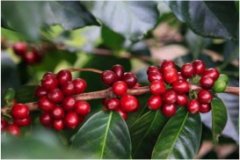
Costa Rica Tara Pearl Dota Goddess Manor Sunrise Summer Coffee Taste Flavor Aroma Characteristics
Weixin Official Accounts cafe_style ) Factory Name: Coffee Workshop Address: No.10 Baoanqian Street, Yuexiu District, Guangzhou City Contact Information: 020-38364473 Ingredients List: Self-baked Shelf Life: 60 Net Content: 100g Packaging Method: Bulk Coffee Bean Ripe Degree: Coffee Ripe Bean Sugar Free Origin: Costa Rica
- Next
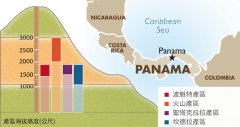
Taste the region │ Panama's four major producing areas and the road to boutique coffee
Professional barista communication please follow the coffee workshop (Wechat official account cafe_style) do you know? In Panama, there is a kind of coffee with special flower and fruit flavor. it not only attracts the focus of the world, but also creates an auction event of high-quality coffee at the auction of raw beans every year. Its name is Geisha. The History of Coffee in Panama in 1780, Europeans were the first to put the first Typica tree species
Related
- Does Rose Summer choose Blue, Green or Red? Detailed explanation of Rose Summer Coffee plots and Classification in Panamanian Jade Manor
- What is the difference between the origin, producing area, processing plant, cooperative and manor of coffee beans?
- How fine does the espresso powder fit? how to grind the espresso?
- Sca coffee roasting degree color card coffee roasting degree 8 roasting color values what do you mean?
- The practice of lattes: how to make lattes at home
- Introduction to Indonesian Fine Coffee beans-- Java Coffee producing area of Indonesian Arabica Coffee
- How much will the flavor of light and medium roasted rose summer be expressed? What baking level is rose summer suitable for?
- Introduction to the characteristics of washing, sun-drying or wet-planing coffee commonly used in Mantenin, Indonesia
- Price characteristics of Arabica Coffee Bean Starbucks introduction to Manning Coffee Bean Taste producing area Variety Manor
- What is the authentic Yega flavor? What are the flavor characteristics of the really excellent Yejasuffi coffee beans?

